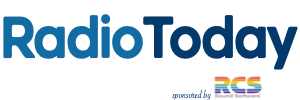RAJAR’s reasons for sticking with the diary method
In response to an article in eRADIO, RAJAR’s Lyndsay Ferrigan takes the opportunity to update the radio industry with the way audience figures are gathered.
“With any methodology there are pros and cons and limitations. No two countries in the world measure their radio market in exactly the same way. That’s not because they don’t agree that there might be something better out there but it’s down to legacy, market needs and complexity, and funding.
In the UK, radio spends a higher proportion of its revenue on its currency research than any other medium, and all of that comes out of the pockets of the stations – there is no advertiser or agency contribution. Our ambition at RAJAR is to provide the UK radio industry with the finest research system that it can afford.
So firstly, let’s start with the fundamental reasons the diary remains, then I will explain what we have tried and test over the last 27 years and what’s in development for the future. The diary (which is completed more in an online or mobile fashion these days rather than on paper where boxes are ticked) allows us to reach a sample of 100,000 adults per year. The infrastructure allows local and national stations alike to be measured in the same way. It is based on pre-call rather than recall (pre-call is “tomorrow I want you to note every time you listen” rather than asking what happened yesterday or last week). We know from the online dashboard that most diary participants fill in the diary as they go.
Face to face recruitment allows geographic and demographic precision. Additionally, the diary is easy to complete regardless of age, device ownership or digital literacy. The substantial completion rate reflects this, and furthermore, the diary does not invade anyone’s privacy.
Of course, it may appear to be surprising that in this day and age, that diary, or even pen to paper can still determine weekly radio listening, archaic almost. However, the RAJAR stakeholders/Board (BBC, Global, Bauer, IPA, ISBA) still agree that it is the most suitable method for the UK. RAJAR constantly improves the current diary system to complement the survey; new incentive ideas, easier ways to complete the diary, more efficient and practical ways for RAJAR interviewers to work etc.
No country I the world has spent more time or money trialling and evaluating electronic measurement than RAJAR has. These are devices or software that detect an encoded signal or match an audio “fingerprint”. They come in all of the guises you suggest – on phones, in watches or other wearable tech – but to date they haven’t been successful methods to measure radio in the UK market due to 3 main factors:
1. Compliance – the panel member not wearing the device correctly, to pick up the listening, especially in the morning where many households are operating to a stressful schedule.
2. Accuracy – these kind of “listening” devices can be prone to error in some audio environments where they can struggle to identify all stations with equal precision.
3. Cost – the hardware it would require implementing is potentially very expensive. RAJAR constantly monitors all relevant developments without making a song and dance about it. For example, we are currently looking into the potential for a hybrid system (including Electronic Measurement) to provide additional information to broadcasters. We are also looking into the potential for streamed/online data to be incorporated into the service.
If you are a Radio Station or a Non-Broadcast subscriber, we run a few training sessions throughout the year should you want to learn more about RAJAR, or I am always available via email to answer questions. Additionally, we are always interested to hear anyone’s ideas on how to measure radio in a fully comprehensive, cost-effective way.”
Lyndsay Ferrigan
RAJAR
